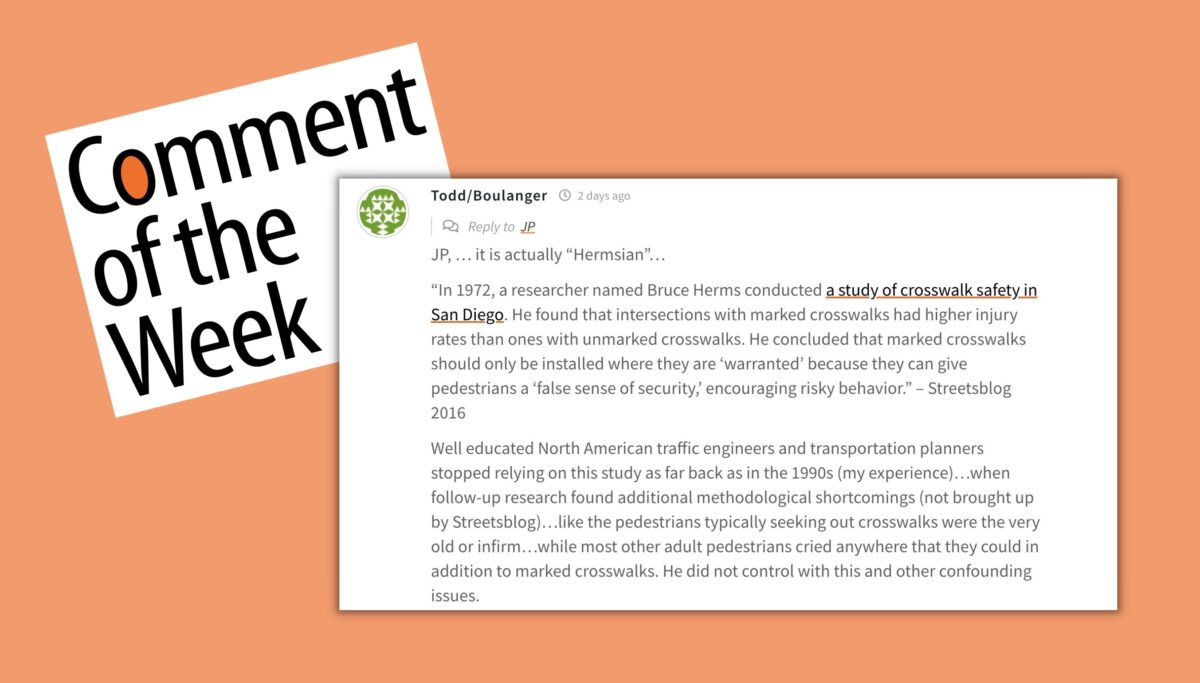Welcome to the Comment of the Week, where we highlight good comments in order to inspire more of them. You can help us choose our next one by replying with “comment of the week” to any comment you think deserves recognition. Please note: These selections are not endorsements.
The comment we’ve selected this week was buried deep in the 100+ comments of our story about ODOT’s decision to close 181 crosswalks in the Portland area.
But first lets talk about nominating comments to be a “Comment of the Week.” Do it! It is really helpful to us to have those suggestions. Here’s how I work: I keep an open file of what I think are good comments as the week proceeds. But if I push a comment through from the phone, I might forget to put it on my list. That’s what happened here.
Luckily, someone nominated Todd/Boulanger’s excellent comment to be “Comment of the Week,” and it has lived to see another day. Thank you.
This comment is a good example of an informative comment from a pro. We get a fair number of those, and it’s part of why people read the BikePortland comment section: Because you learn stuff.
In this example, Todd/Boulanger helps us understand where the idea of a “false sense of security” originated. He writes in reply to another commenter, “JP,” who labelled the ODOT decision “Orwellian.”
Here’s what Todd/Boulanger wrote:
JP, … it is actually “Hermsian”…
“In 1972, a researcher named Bruce Herms conducted a study of crosswalk safety in San Diego. He found that intersections with marked crosswalks had higher injury rates than ones with unmarked crosswalks. He concluded that marked crosswalks should only be installed where they are ‘warranted’ because they can give pedestrians a ‘false sense of security,’ encouraging risky behavior.” – Streetsblog 2016
Well educated North American traffic engineers and transportation planners stopped relying on this study as far back as in the 1990s (my experience)…when follow-up research found additional methodological shortcomings (not brought up by Streetsblog)…like the pedestrians typically seeking out crosswalks were the very old or infirm…while most other adult pedestrians crossed anywhere that they could in addition to marked crosswalks. He did not control for this and other confounding issues.
“Since the Herms study, other studies have refuted his conclusions, including work produced by the FHWA. Nevertheless, the influence of his research from [50] years ago persists. As backward as it seems, engineers still refuse to install crosswalks on the grounds that it would harm pedestrian safety.” – Streetsblog 2016
Thank you , Todd/Boulanger! And thank you for the links. You can find Todd’s comment, and the 106 other things people had to say, under the original post.


